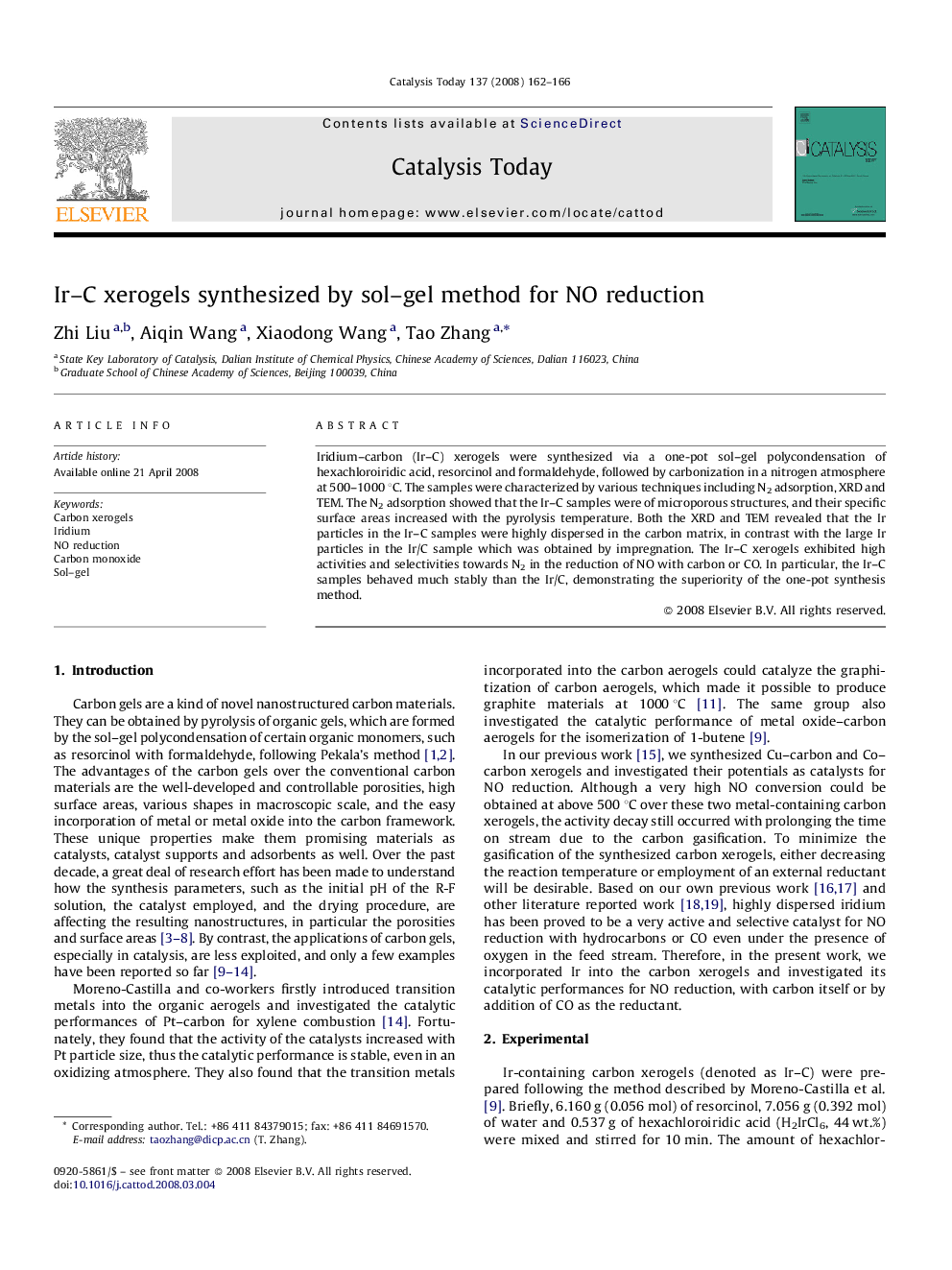| کد مقاله | کد نشریه | سال انتشار | مقاله انگلیسی | نسخه تمام متن |
|---|---|---|---|---|
| 57505 | 47122 | 2008 | 5 صفحه PDF | دانلود رایگان |

Iridium–carbon (Ir–C) xerogels were synthesized via a one-pot sol–gel polycondensation of hexachloroiridic acid, resorcinol and formaldehyde, followed by carbonization in a nitrogen atmosphere at 500–1000 °C. The samples were characterized by various techniques including N2 adsorption, XRD and TEM. The N2 adsorption showed that the Ir–C samples were of microporous structures, and their specific surface areas increased with the pyrolysis temperature. Both the XRD and TEM revealed that the Ir particles in the Ir–C samples were highly dispersed in the carbon matrix, in contrast with the large Ir particles in the Ir/C sample which was obtained by impregnation. The Ir–C xerogels exhibited high activities and selectivities towards N2 in the reduction of NO with carbon or CO. In particular, the Ir–C samples behaved much stably than the Ir/C, demonstrating the superiority of the one-pot synthesis method.
Journal: Catalysis Today - Volume 137, Issues 2–4, 30 September 2008, Pages 162–166